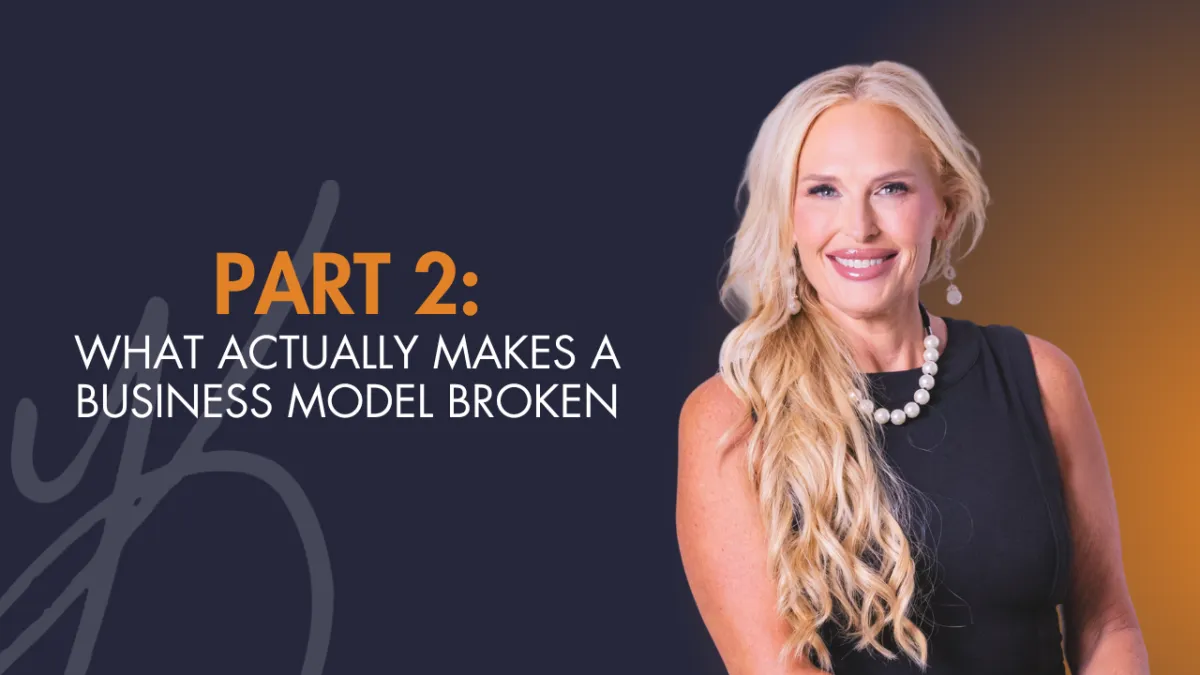
Part 2: What Actually Makes a Business Model Broken
In Part 1 of this blog series on Strategy, I said what most won’t:
Hustle is the most expensive coping mechanism in modern entrepreneurship.
And if you’re still trying to market your way out of misalignment or launch your way out of structural breakdown, you’re not scaling — you’re surviving.
So, what actually makes a business model broken?
Let’s get into it.
Even "Successful" Businesses Can Be Broken at the Core
Yes — even businesses with 6-, 7-, or multi-7-figure revenue.
Even businesses with visibility, waitlists, and shiny marketing.
The truth is: if your model is misaligned, unscalable, or unsustainable… it’s broken.
And you’ll feel it — not just in your numbers, but in your nervous system.
I’ve worked with hundreds of six- and seven-figure businesses that looked successful on the surface, but behind the curtain?
They were duct-taped together and bleeding profit, energy, or both.
Here’s what that looks like...
7 Signs You’re Building on a Broken Business Model
1. Revenue Without Profit
If you’re making money but not keeping it, you’ve built a burn machine — not a business.
Topline revenue might impress your audience, but if the bottom line doesn’t back it up?
It’s not sustainable. It’s a liability.
2. It Only Works If You Work
If the business depends on you to generate sales, deliver results, or hold everything together, you don’t own a company.
You own a glorified job with a burnout package.
3. Your Offers Don’t Scale
If everything you sell is custom, complex, or tied directly to your time and energy, your offer stack is working against you.
You don’t need more offers — you need offers that scale intelligently.
4. Your Operations Can’t Support Growth
You’re trying to grow with five-figure systems and low-level hires who require micromanagement.
This is why so many CEOs feel like they’re managing chaos instead of leading a company.
5. Your Positioning Isn’t Unrivaled
If your market sees you as an option instead of the option, you’ve got a positioning problem — and that’s a business model issue, not just a brand refresh.
You haven’t made your competition irrelevant.
6. You Can’t Predict Results
If you can’t look 90 days out and say with confidence where revenue will come from, what’s driving it, and how you’ll fulfill it — your model lacks structure, visibility, and control.
7. Growth Creates More Chaos, Not More Freedom
If every revenue increase brings more pressure, more stress, more complexity — you’re not scaling.
You’re amplifying dysfunction.
These Aren’t Flaws. They’re Fatal Patterns.
None of these issues get better with more hustle.
They get worse — because hustle pours gasoline on broken systems and calls it progress.
What you need is not a better calendar.
Not another launch.
Not a new funnel.
Not another low cost VA.
You need to fix the foundation.
You need to architect the model that actually earns the right to scale.
Up Next:
Part 3 — What Strategy Actually Is (And Why Most Coaches Get It Dead Wrong)
We’re going to talk about what strategy really means — and why so many entrepreneurs are chasing tactics that can never fix what only a structural strategy can.
This next part? It’s where most of the industry gets it wrong — and where you’ll finally start getting it right.
Want to go deeper right now?
Download The Strategy Gap White Paper
Get the framework that shows you the 12 structural pillars of a scalable business — and how to fix the silent profit leaks holding you back.
DON'T FORGET TO SHARE
